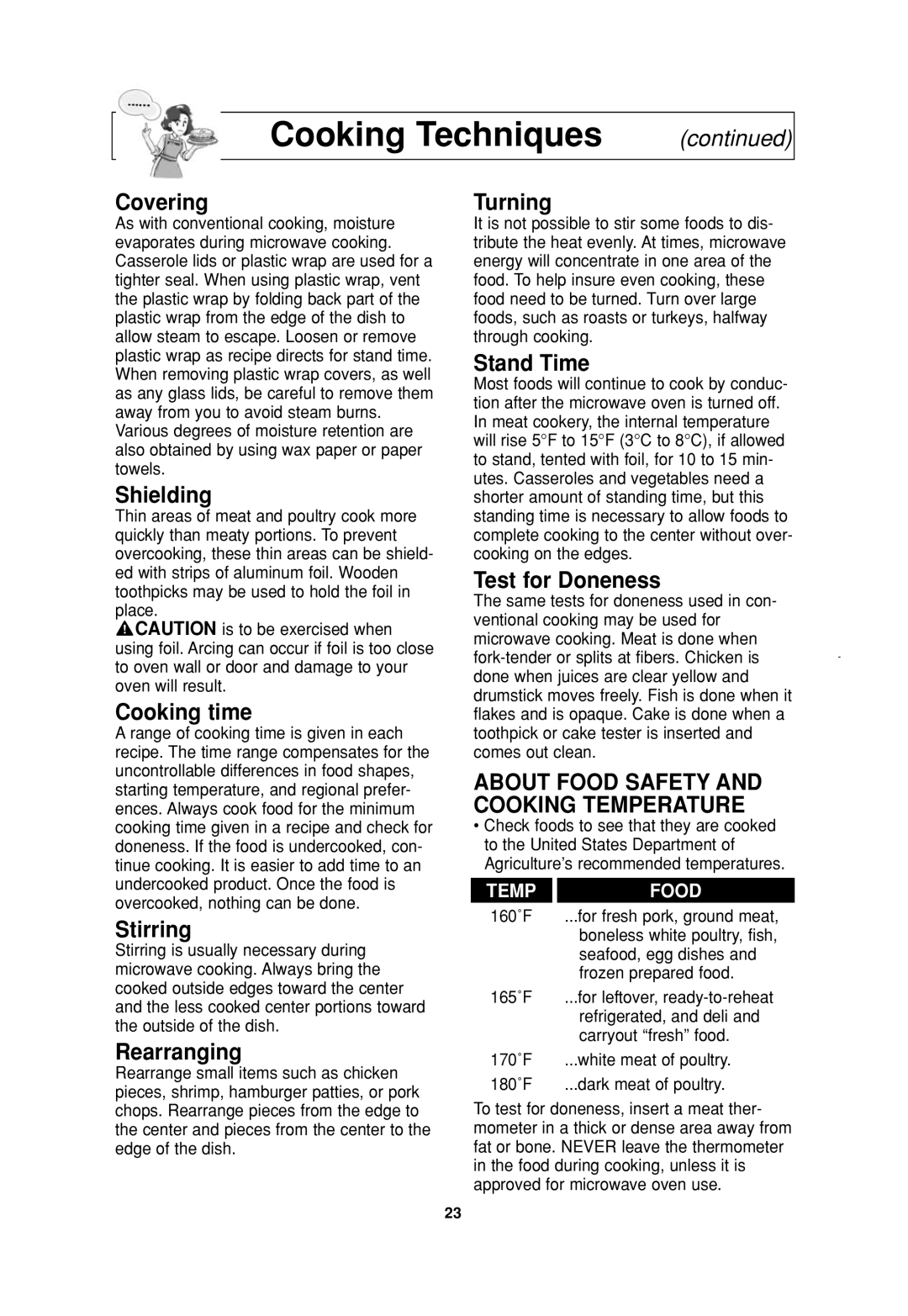NN-SN747, NN-SN757, NN-SN957, NN-SN977, NN-SN947 specifications
The Panasonic NN-SN797, NN-SN957, NN-SN747, NN-SN977, and NN-SN947 represent a robust line of countertop microwave ovens that combine convenience, performance, and advanced technology. These models are designed to meet the diverse cooking needs of modern kitchens while ensuring efficiency and ease of use.The NN-SN797 features a sleek design with an inverter microwave technology that provides consistent cooking power, making it ideal for delicate foods like fish and sauces. The unit boasts a capacity of 2.2 cubic feet, allowing for large dishes, and offers 1250 watts of cooking power, which significantly reduces cooking time. Its 14 pre-programmed auto-cook settings provide a range of options, simplifying meal preparation.
The NN-SN957 builds on this foundation with a slightly higher capacity and advanced inverter technology. This model is particularly noted for its smart cooking technology that adjusts the power and cooking time automatically, ensuring perfect results. The NN-SN957 also features a sophisticated touch control panel and a sleek stainless steel finish, making it not just functional but also a stylish addition to the kitchen.
The NN-SN747, while slightly smaller at 1.2 cubic feet, continues to deliver quality and efficiency. This model excels in compact spaces without compromising on features, providing 1000 watts of power and inverter cooking capabilities. Its size makes it perfect for smaller households or studio apartments where saving space is essential.
The NN-SN977 is similar in design to the NN-SN797 but includes advanced sensor cooking technology that automatically adjusts the cooking time and power based on the moisture levels detected in the food. This feature helps prevent overcooking and ensures that your meals are always perfectly cooked.
Finally, the NN-SN947 combines power and efficiency with a user-friendly interface. It offers a variety of one-touch settings for cooking, reheating, and defrosting, making it incredibly convenient for those on-the-go. All models in this series are equipped with easy-clean interiors and child safety locks, emphasizing safety and maintenance.
Overall, Panasonic’s NN-SN series stands out for its innovative features, efficient cooking technologies, and superior quality, making it a top choice for consumers seeking versatile and reliable microwave solutions.

